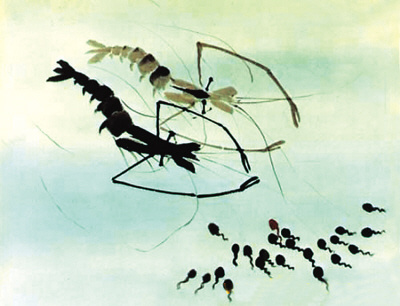John Stevenson, director of Kung Fu Panda, a 2008 computer-animated action comedy by DreamWorks Animation, said he and his crew collected a large number of Chinese pictures and water-ink animations during the preparation of the movie.
Chinese animation has a history of over 80 years, and ink-wash animation is a major part of it, having first appeared in the 1960s. However, its popularity has waned due to its cost and time-intensiveness.
The Chinese style should not remain fixed, including water-ink animation, the People's Daily said in a report, quoting an artist. It is not enough to only use traditional methods such as puppets, papercutting or water-ink to produce animation – there must also be innovation.
The work that amazed the world
Even though few people talk about ink-wash animation these days, it is still important in the world of animation history.
In 1960, the appearance of the first Chinese ink-wash animation Tadpoles Searching for Mother signified a breakthrough in the form of expression and aesthetic conception in animation. It received the Best Animated Film Prize at the First Hundred Flower Awards, as well as winning five international prizes.
Three years later, another ink-wash film called Cowherd's Flut, directed by Qian Jiajun, was awarded the Golden Prize at the Odense International Fairy Tale Film Festival in Denmark. People called ink-wash animation the "fifth Chinese invention."
But even before the birth of Tadpoles Searching for Mother, another Chinese animated feature film called Uproar in Heaven had started exploring a connection between Chinese traditional painting and animation. The two-hour long film mixed five different colors in its roles, which included the Monkey King and the Jade Emperor. It was considered an ideal combination of Disney-style films and Chinese traditional arts.
With the birth of these films Chinese-style animation – which fused traditional arts such water-ink, paper folding and papercutting – enjoyed a glorious phase from the 1950s to the 1980s.
Japanese Cartoonist Osamu Tezuka, the "Godfather of Anime", said he was greatly influenced by Chinese ink-wash animation. Another Japanese anime artist also commented, saying, "It is incredible that ink-wash pictures could move like films. It's amazing!"


















